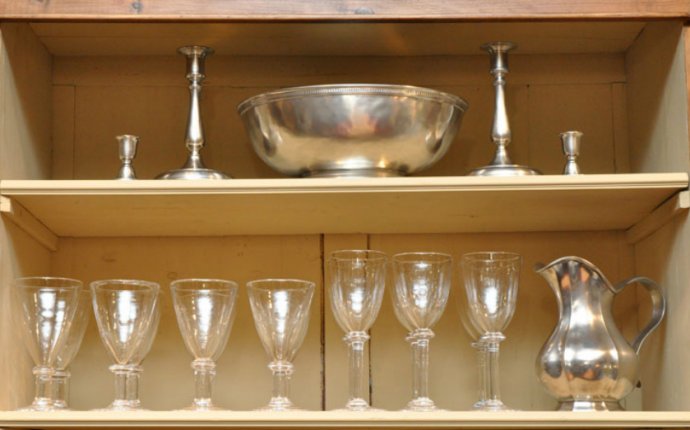
How to Appraise antiques?
 There are a number of factors you must consider when determining the value of an antique or collectible. Looking an item up in a price guide or finding a comparable item is only the beginning.In this article I have listed some guide lines to use when valuing your antique or collectible.
There are a number of factors you must consider when determining the value of an antique or collectible. Looking an item up in a price guide or finding a comparable item is only the beginning.In this article I have listed some guide lines to use when valuing your antique or collectible.
I will start with one of the most important things to consider when determining the value of an item.
Condition:
As an appraiser one of the first things I look at is condition. The condition of an item can affect the value dramatically. An item in good to mint condition will bring far more then an item in below average or poor condition. Condition always affects an item no matter how rare the item is. Look for the following when determining condition:
- Cracks, Fractures or Chips
- Crazing
- Defects
- Finish Condition
- Condition of the Material the item is made of (ie. Wood, paper, plastic, cloth and etc)
- Over all condition
- Missing Parts or Pieces
- Flaws
- Repairs or Touch ups
- Excessive ware
- Tears or Rips
- Stains or Marks
- Anything that keeps your item from being in like new or mint condition
Antique and Collectible Market Trends:
Antique values can be affected by market trends, this can happen quickly. Watching your favorite antique or collectible market will help you determine the true value of your item. Market trends can affect the price in a positive way by driving prices up or a negative way by bringing the prices down. If you are using a price guide the prices at the time of printing may have been affected by a market trend that no longer exists.
Age Does Not Always Equal Value
Most common thing I hear when I do an appraisal is “This is old it must be worth a lot or that was my Grandma’s it has to be worth something.â€The age of an item does not equal the value of an item. There are many items that are antique (over 100 years) and have little to no value. The age of an item is best used to help determine the authenticity of an item.
Check for Marks:
This is one of the first things an appraiser looks for. You will always see an appraiser pick up an item and look for a mark. Maker’s marks or signatures on any item can tell you a lot about the piece. Here are some things a mark can tell you:
- If the item is real or fake (Be careful of fake marks)
- Date the item was made. Many makers changed their marks frequently and knowing when a mark was used can help you determine the age and authenticity of an item.
- Who made the item. Value is determined not only by what company or where an item was made but by who the artist or maker was. For example a Tiffany silver vase is worth a decent amount but a Tiffany silver vase with the right artist signature is worth far more.
- Pattern or design information. Knowing the pattern or design can change the value of an item. This information will also help when you are doing research on the item.
Rarity:
Rarity can play a major part in the value of an antique or collectible. Extremely rare items with some damage may still retain a decent value. For example a Tiffany lamp with a hair line crack in one of the shade panels will still bring a high price when sold. On the other hand a common stain glass lamp with the same damage will not hold much value if any at all. If the item is common this will affect the price by making it worth less than a rare item, even if the items come from the same maker. A lot of the times this will happen with pottery or glassware when the patterns are different but the makers are the same.
Authenticity
Is the antique or collectible genuine, fake or a reproduction? One important thing to remember is that most popular antiques went into reproduction as soon as they were made. Marbles are the most reproduced antique on the market. They are also hard to authenticate since the same process is used to make modern day marbles. Here are some things to look for when trying to authenticate and item:
- Signs of wear and age. Are the wear markes in the right place. For example when looking at a chair you should see wear on the seat and back where someone would grab the chair to pull it away from the table.
- Any discrepancies in the signatures or marks on the item.
- Were the proper construction techniques used for the period the item is from. For example are the nails used modern nails or hand forged? Are there modern tool marks or modern construction elements?
If you are unsure of the authenticity of an item ask the experts. This brings me to the next step.
Ask the Experts:
Appraisers have a network of friends and colleagues that they will consult with when they need information on an item outside of their specialty. Do not be afraid to ask for help. This will save you time and money. There are times when you can not find information on an item. Asking an expert can help you find the information you are looking for. I try to stress this as much as I can, if you do not know ask. There is a good chance that where ever you bought the item from will not accept returns.
Take the Middle Road
When an appraiser values and item we use the median price. The median price gives a more accurate value. Sometimes items will sell for above an average price at one auction and much lower price at another auction. If you take the high or low price this can give you an inaccurate value. It is always better to estimate the item a little lower and have the sale price exceed your estimate price then to estimate the item at a higher price and have the sale price fall short of your estimate.
These 10 steps should help you appraise antiques and collectibles like a pro in no time. If you have any suggestions or tips you would like to share please leave them in the comment section of this article.









